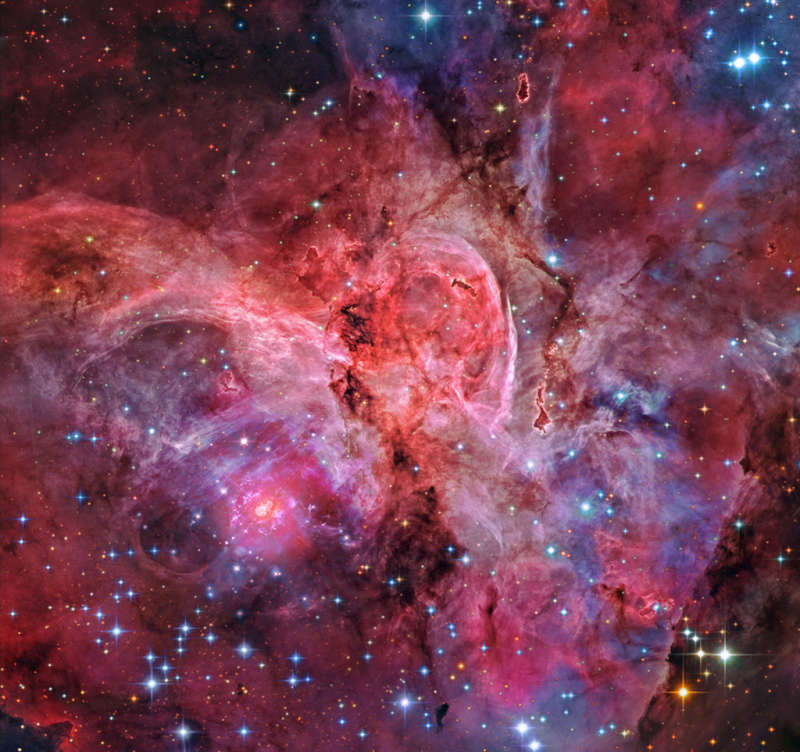
|
Credit & Copyright: NASA,
ESA,
Hubble,
ESO,
Amateur Data;
Processing & Copyright:
Robert Gendler &
Roberto
Colombari
Explanation:
A jewel of the southern sky, the
Great
Carina Nebula, also known as NGC 3372, spans over 300 light-years,
one of our galaxy's largest star forming regions.
Like the smaller, more northerly
Great Orion Nebula, the
Carina Nebula is easily visible to the
unaided eye, though at a distance of 7,500
light-years it is some 5 times farther away.
This
gorgeous telescopic close-up
reveals remarkable details of the region's central glowing filaments of
interstellar gas
and obscuring cosmic dust clouds in
a field of view nearly 20 light-years across.
The Carina Nebula is home to young, extremely massive stars, including
the still enigmatic and violently variable
Eta Carinae, a
star system with well over 100 times the mass of the Sun.
In the processed composite of space and ground-based image data
a dusty, two-lobed Homunculus Nebula
appears to surround Eta Carinae itself just
below
and left of center.
While Eta Carinae is likely on the verge of a supernova explosion,
X-ray images indicate that the Great Carina Nebula
has been a veritable
supernova
factory.
|
January February March April May June July August September October November December |
| ||||||||||||||||||||||||||||||||||||||||||||||||
NASA Web Site Statements, Warnings, and Disclaimers
NASA Official: Jay Norris. Specific rights apply.
A service of: LHEA at NASA / GSFC
& Michigan Tech. U.
Based on Astronomy Picture
Of the Day
Publications with keywords: Eta Carinae
Publications with words: Eta Carinae
See also:
